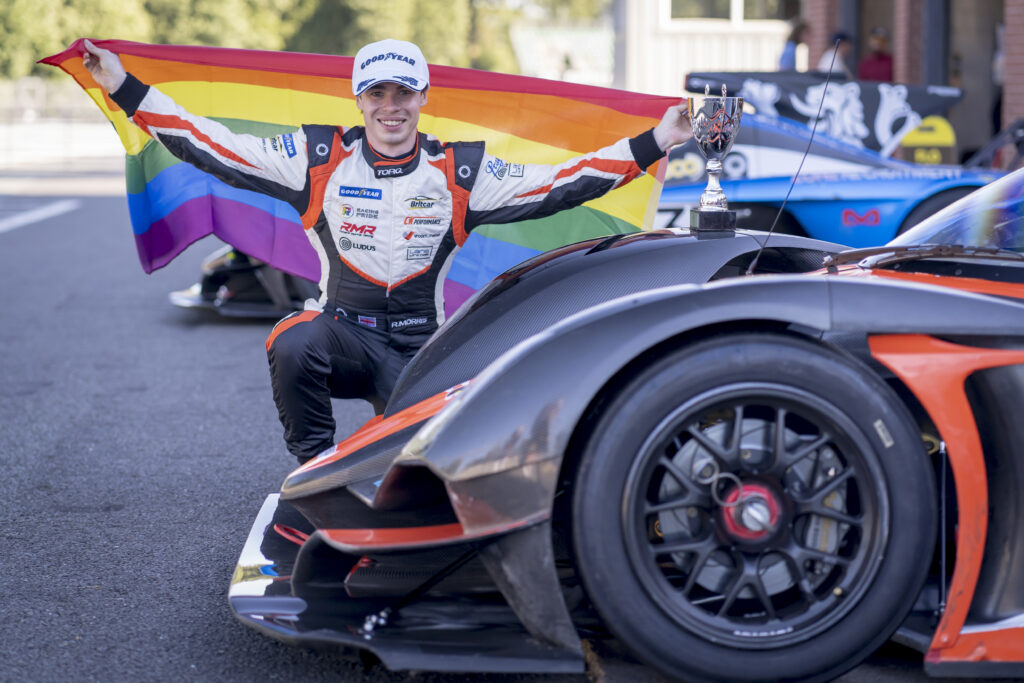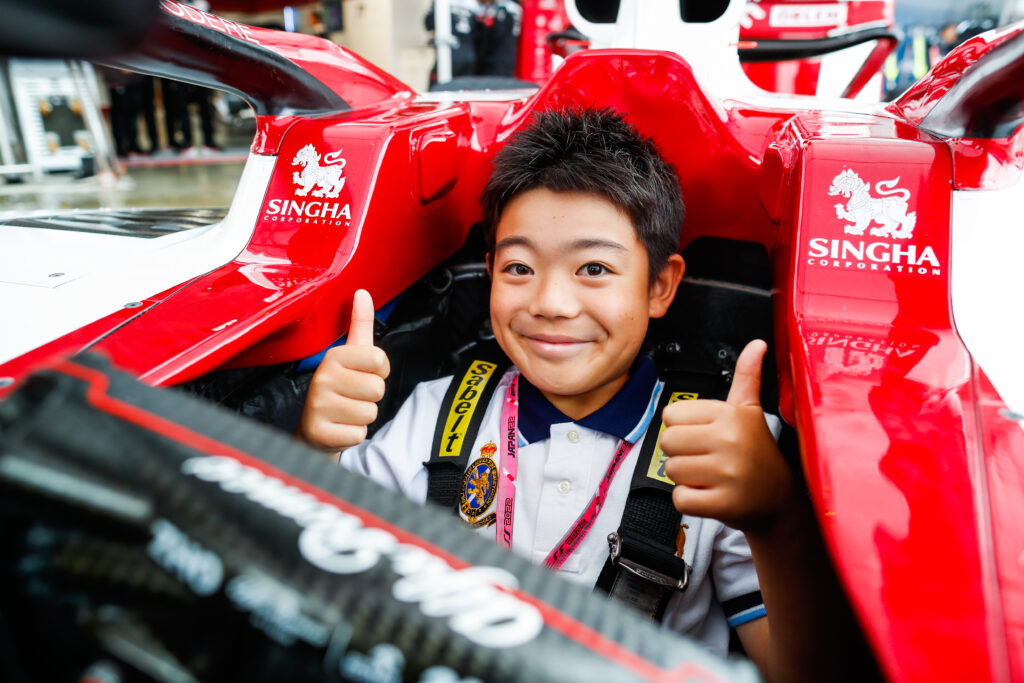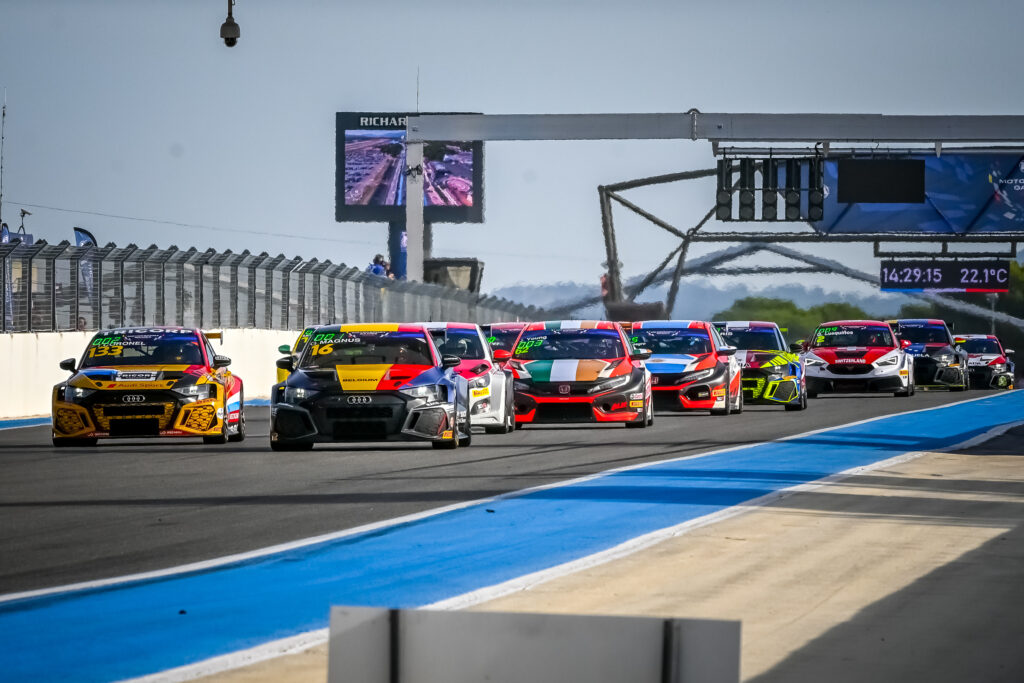In this Winner’s Spotlight series, we will be shining a light on past winners of The Race Media Awards, speaking to those who have achieved success with outstanding creativity across the motorsport industry.

Launched in 2019 by British racing driver Richard Morris, Racing Pride is a movement that actively promotes and supports the inclusion of the LGBTQ+ community within global motorsport.
In 2022, Racing Pride won the Most Inspiring Campaign at The Race Media Awards. After years of growth and increased visibility globally, we spoke with Richard about the history of Racing Pride, the impact it’s made so far and what has happened since their win. We start by hearing from Richard about his early relationship with motorsport and the moments that inspired him to get behind the wheel.
I grew up in a household which appreciated and enjoyed motorsports; my dad used to mechanic on an amateur level for my godfather at Formula Ford. I watched Formula 1, had toy cars, went around car museums and was a huge fan of Michael Schumacher. So, as a little kid growing up I desperately wanted to be a driver.
The opportunity to do so came up when I was 12 years old, when one of my friends invited me to a karting birthday party. I was already in love with motorsport, but the first time I drove a kart I decided, “this is something that I want to take further”.
I went from indoor to outdoor karting, made the move into Formula Ford 1600 but started to realise that single seaters are very expensive and I was running out of budget! I still finished second in my class in the championship, and had done enough to get a test drive in a prototype, and now race with Revolution Race Cars in the European Sports Prototype Cup, where we’ve had seven podiums and five wins in eight races.
What drove the need for Racing Pride, and what signifiers made you feel there was a need to establish this movement?
I was in my early teenage years as I was starting in karting, which is obviously a transitional period for a lot of people as they’re figuring out their identity. I started realising that I might not be straight, and I found that really difficult within a motorsport environment for a few reasons.
Firstly, I desperately wanted to be a racing driver, but I had never seen LGBTQ+ drivers being successful in any series. There were no role models for anyone, other than a straight male driver. I didn’t know other LGBTQ+ people around me in the paddock or in the series I was competing in. In that respect, there was a lack of visibility and a lack of that community.
The imagery that came from what motorsport is, who it is for and how it marketed itself didn’t really lend itself to the idea that you could be different and be successful in motorsport. Some of the language I heard around paddocks was also really unhelpful. I did try coming out to one or two people in karting, and about the best response I got was, “that’s okay, but let’s not talk about it”. Some of the responses were a lot worse, so I went back into the closet in motorsport, whilst being out in other areas of my life.
As I progressed, I realised it wasn’t something that I could maintain into adulthood if the sport was going to be a big part of my life. I needed to be myself within the sport in order to fully appreciate it, enjoy it and give myself to it fully.
In late 2018, I felt we needed a movement that could provide visibility of LGBTQ+ people and allies. I was sure that there were allies in the sport, they just hadn’t had a way of expressing it previously, something they could get behind to show support so we could create a successful community of LGBTQ+ people bringing people together to remove that sense of isolation.
Also, to be able to provide education to help championships, teams and organisations in the sport to understand allyship, to understand some of the barriers that there have been to LGBTQ+ inclusion and to communicate their support in the right way. Fortunately, I was able to get a group of people together by posting on my social media originally, and we were able to work on this idea and launch what became Racing Pride.
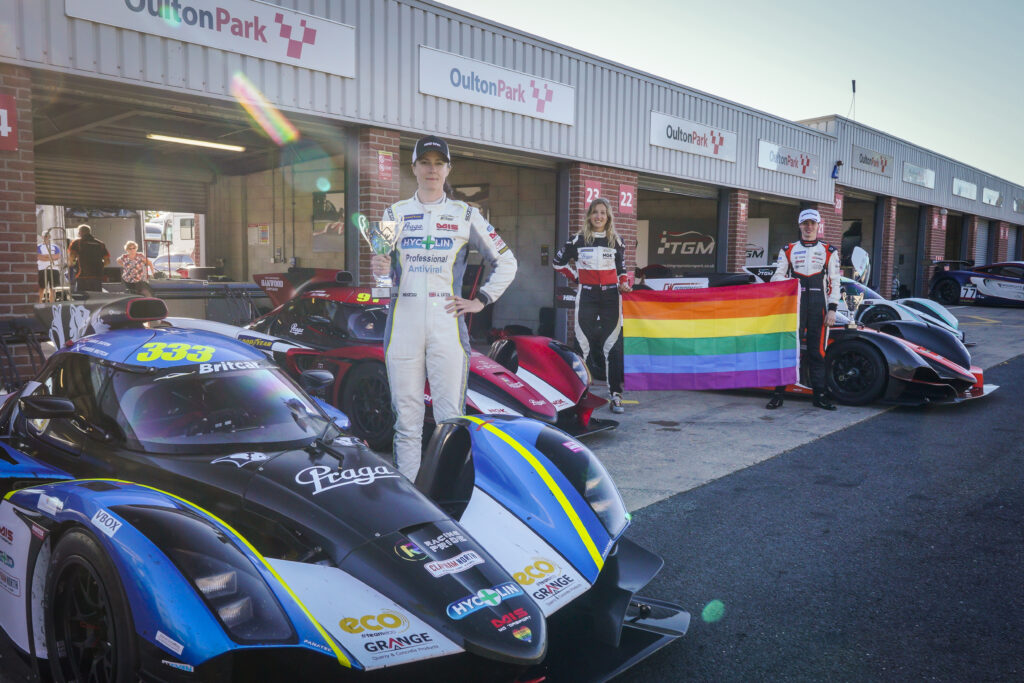
There’s a great emphasis that you placed on the importance of allies. And this may be a word that people may not be familiar with. So firstly, for anyone who may not know, what do you see as being an ally, and why is allyship so important to the LGBTQ+ community?
Allies are people who aren’t necessarily LGBTQ+ themselves, but want to show their support and help to improve the experiences of LGBTQ+ people. In order to advocate for the LGBTQ+ community, we need that broad support that creates an inclusive culture.
Allies can also take the burden off the community. It shouldn’t be some weight that LGBTQ+ people have to always carry to be the one to say, “that’s not very inclusive language” because that just further isolates a community and forces people to come out in ways they perhaps don’t want to.
Allies who hold positions of privilege within the sport have the ability to make those points, encourage changes and amplify the voices of the LGBTQ+ community.
How did you go about building the framework for organisations within motorsport?
We started out by getting together a group of LGBTQ+ people with diverse experiences across the sport in different roles. Other drivers like myself, but also engineers, mechanics, marshals, officials, volunteers and people in the media, who see the sport from different aspects and have ideas that they can bring to the table.
Initially, the partners were close contacts who wanted to support us, but we’ve evolved and grown to the point where we’re working with major companies and teams right up to Formula 1.
Something that’s really important about our approach towards those partnerships is that yes, we learn from them, bring insights and provide frameworks, we’re also extremely flexible and bespoke in how we work with new partners. We really tailor to whom we’re working with and start off with listening to where they are. Motorsport is quite new to approaching equality, diversity and inclusion (EDI), so we’ve helped our partners establish their first ever internal EDI networks and programmes.
We speak to team members to find out what their experiences are and design interventions looking at policy, providing workshops making sure they achieve positive outcomes.
Racing Pride is about far more than just the public visible campaigning for LGBTQ+ inclusion, it’s also helping people in their everyday working environments. We run educational sessions for people from HR to managers, to the trackside team and all employees to make sure that education, knowledge, awareness and visible allyship is there for all.
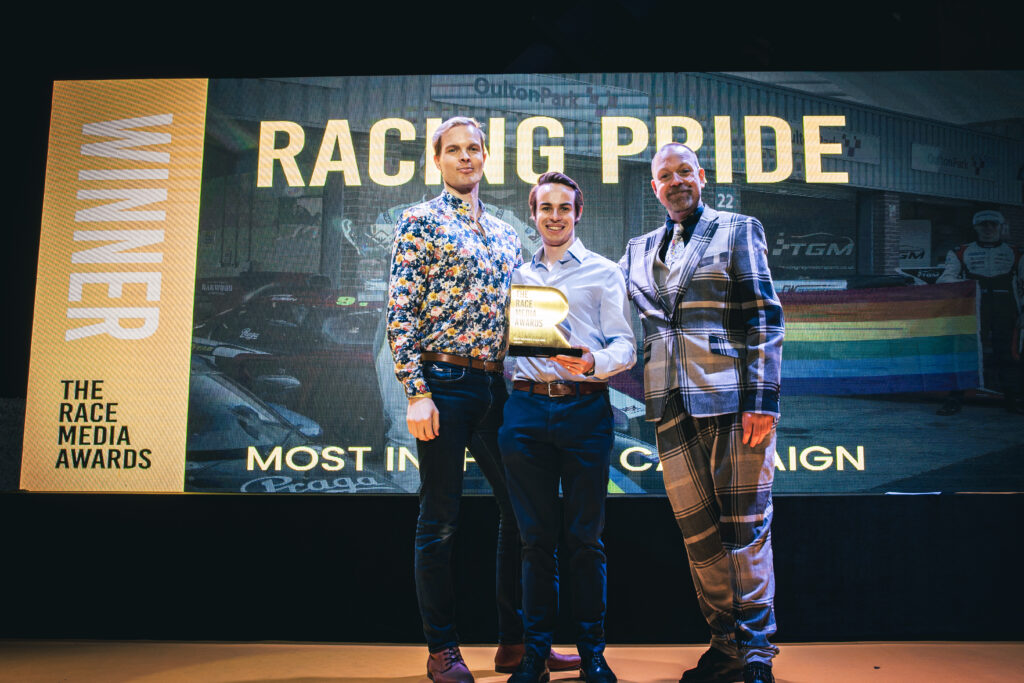
Racing Pride was the inaugural winner of the ‘Most Inspiring Campaign’ category at The Race Media Awards a few years ago. Since winning the awards, what has Racing Pride been working on over the last 18 months?
Things have been developing really quickly for Racing Pride. At the point at which we won The Race Media Awards, we had just begun working in the previous year with the Aston Martin Formula 1 Team and then extending that to the Aston Martin Lagonda road car business. Only a couple of weeks after the awards, we launched in North America as well.
Now we’ve worked with 6 of the 10 Formula 1 teams, and have full official partnerships with Red Bull Racing, Alpine and Aston Martin. We have also expanded our presence dramatically to go beyond the UK to having ambassadors, partners, community champions and members across Europe, North America, and Australia where we held some successful events around the Grand Prix earlier this year.
This year we launched our membership community so that individuals can be part of Racing Pride. I wanted to create this way in which individuals at any level within the sport or just fans and people interested in the sport who are LGBTQ+ or allies can actively be part of Racing Pride, and can be part of what we’re trying to achieve.
I’m delighted to say that as of today, we have members in 17 different countries. They have an online safe space where there are regular conversations and events, and also real life real world events that actually bring the LGBTQ+ community together.
It sounds like the benefit comes to both organisations and individuals working within the motorsport community. What do you see as being the biggest benefits at an individual and organisational level?
I was speaking recently at a panel event at the McLaren Technology Centre about how diversity and inclusion improves performance. Race teams are ultimately all about performing on track, and in order to get the best out of people you need to get the best people.
You need to have a culture which encourages everyone to feel like they can be part of the team. A lot of people identify as LGBTQ+, and if you don’t create a culture in which people can feel included and valued, they won’t apply and you’ll miss out. Or once they’re in the team, they’ll burn out and leave because they don’t feel respected or in a safe place.
When Team Principal Christian Horner came to one of our workshops at Red Bull Racing, he really emphasised how this is about people within the team. Teams also see the benefit of boosting their own performance by attracting and retaining the best talent and getting the most out of them.
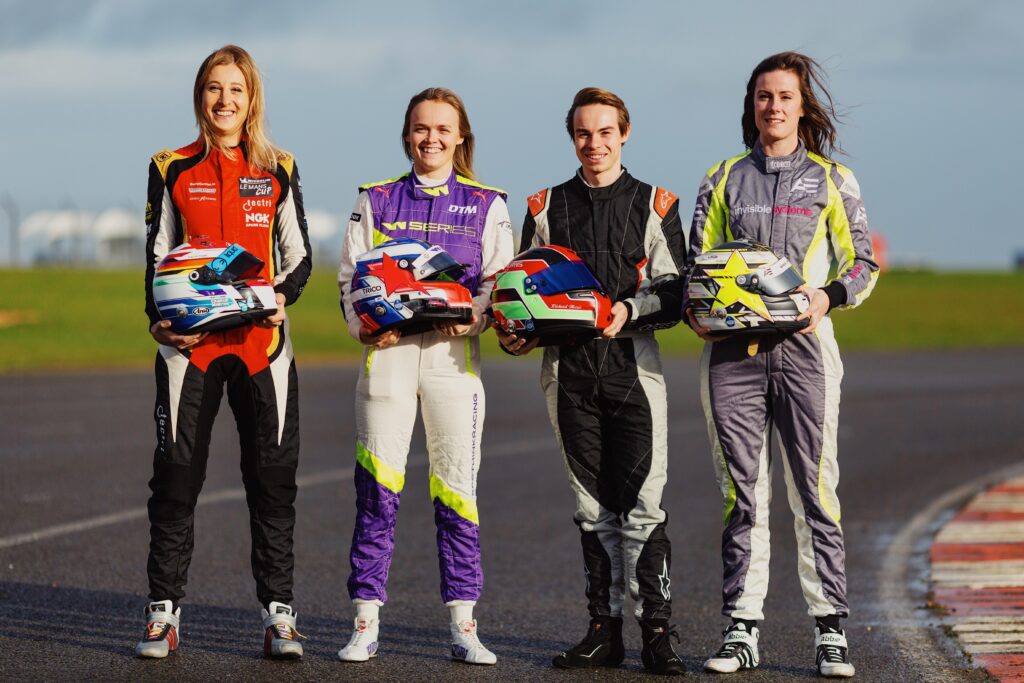
Your ambassador programme includes people from all corners of the motorsport world. What is the importance of their role with Racing Pride?
What’s really important about Racing Pride is that this isn’t people from outside of motorsport saying how things should be better. These are people within motorsport with lived experiences who can use that experience to improve the sport to make it accessible and available to more people.
It’s crucial that we are built on a group of ambassadors with a huge variety of different experiences, because it makes it directly relevant to motorsport situations. It’s coming from people who’ve been in garages at race weekends, so it’s not abstract advice, it’s really focused on practical situations.
At the top of motorsport in recent years, we’ve seen F1 teams and world champions such as Sebastian Vettel and Lewis Hamilton use their platform to make clear statements on a wide range of human rights issues. Their allyship for the LGBTQ+ community feels like a really good start, but is it enough?
Formula 1 has come a long way. For the first time ever, fans are being directly spoken to by their heroes saying “I support you, you’re valid to me, I care about you”. That’s a really powerful lasting connection for the sport to draw with its fans. Any pushback experienced is usually from people who are against the trajectory of society on this issue, but that isn’t lasting.
I didn’t expect that I would ever see Formula 1 drivers of the stature of Sebastian Vettel and Lewis Hamilton being part of something so positive for the LGBTQ+ community, and it has been extremely moving to have had some small connection to starting that conversation in Formula 1.
However, it’s got to be about more than just public acts of allyship from prominent individuals and teams. Allyship without action behind it is a bit empty. We can’t go from a position of the sport being afraid to talk about LGBTQ+ inclusion to the sport putting rainbows on helmets but not actions in place behind that. Real allyship is elevating authentic LGBTQ+ voices, using that visibility to say listen to these people who have genuine experiences and elevating their voices.
What’s really important about the work Racing Pride does is as well as working with teams to have visible stories, social media posts that track activations in Pride Month and other times, we work with them to make sure that their everyday team culture is more inclusive for LGBTQ+ people. Drivers and teams deeply inspire people setting out at a grassroot level, and they can set a direction for the sport. But we do also need to make sure this fantastic example in Formula 1 is something mirrored all the way throughout motorsport structure.
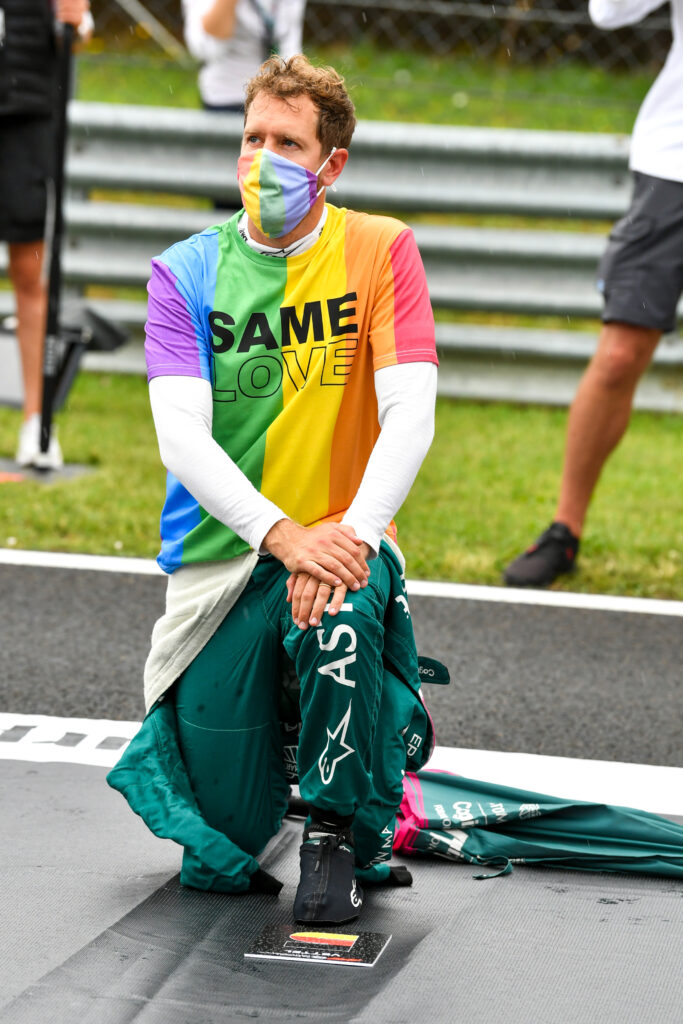
What did it mean to you to win the “Most Inspiring Campaign” award?
It was really fantastic to win in the inaugural year as a recognition of what Racing Pride had done to that point.
To have our organisation included in an awards event alongside Formula 1 teams, PR agencies and established businesses within the sport, provided a platform for us to talk about what we’re doing for people within the sport at that level, and to be included in those conversations. It was a really touching recognition of what we’ve done, but also a fantastic way to help us continue to build.
Speaking of building, tell us about how you and Racing Pride are building towards the future.
I’d like us to continue to be about real, genuine, authentic inclusion as well as visibility campaigns, and I’d like us to continue to work with more teams and companies across the grid and to have a presence in more regions to reach more members and a broader community.
I think we also have to continue to diversify. We started out with partners in club racing and grassroots racing and have moved to having partners in Formula 1. I really want to feel that the benefit of the increased profiling of racing drivers and partners will translate into a benefit for people throughout motorsport from grassroots, right up to the elite level.
We will continue to strengthen our relationship with Formula 1 teams, but we’ll also be looking to build relationships further outside of Formula 1, and have already done work with Formula E and various other series.
If fans or people who work within the motorsport industry want to get involved or find out more about Racing Pride, where can they go?
I’d encourage people to look at our website racingpride.com
We’re also on social media on X/Twitter, Instagram, Threads, Facebook and LinkedIn. Our handle on social media is @RacingPrideHQ.
Please do look there for information such as our Ally Pack, which talks about how you can be a good ally to the LGBTQ+ community, as it explains some of the terminology, goes into some of the experiences people have had. Even if it’s just putting some likes on some social media posts, sharing and putting out supportive statements from your personal or business accounts, all of that helps to increase and enhance the visibility that Racing Pride has and ultimately, the number of people that our message of inclusion can reach.
